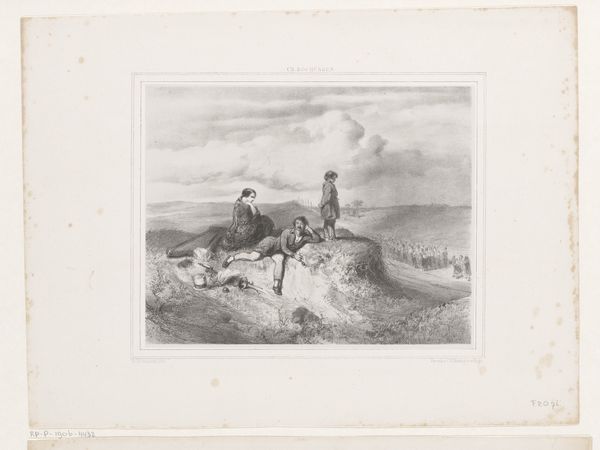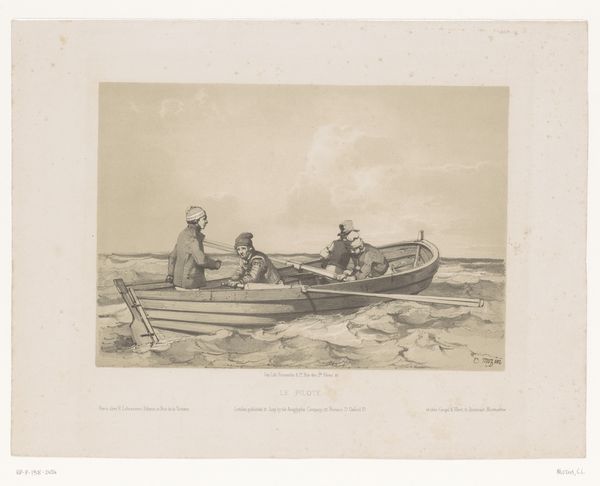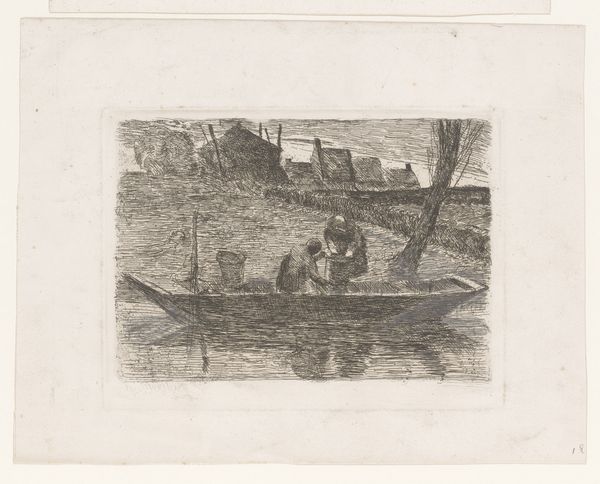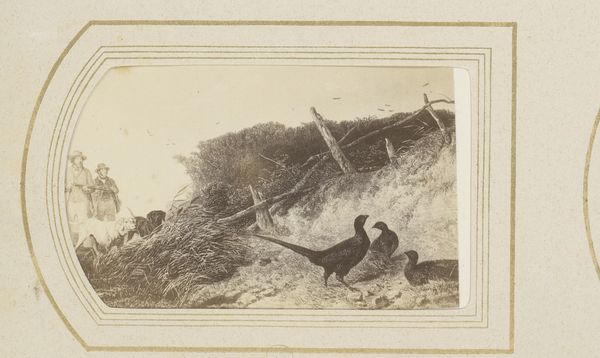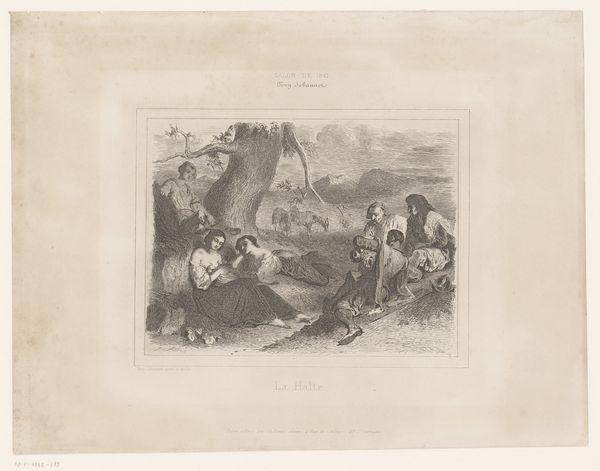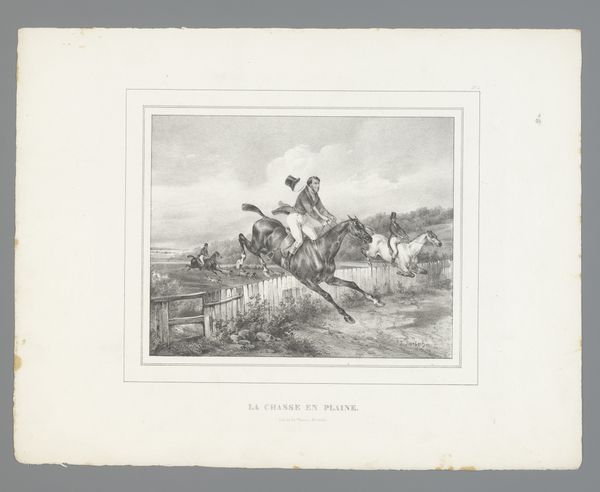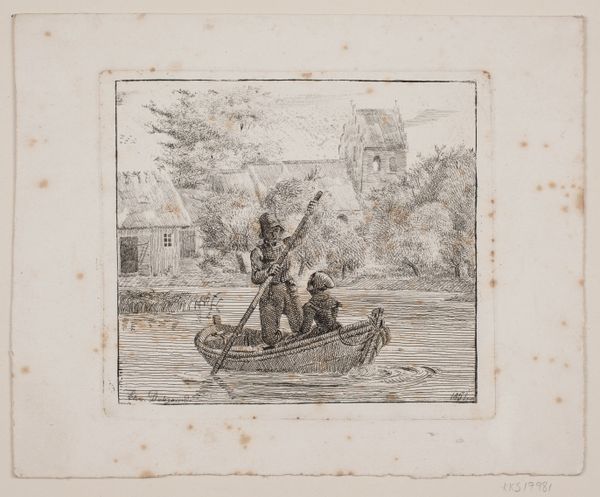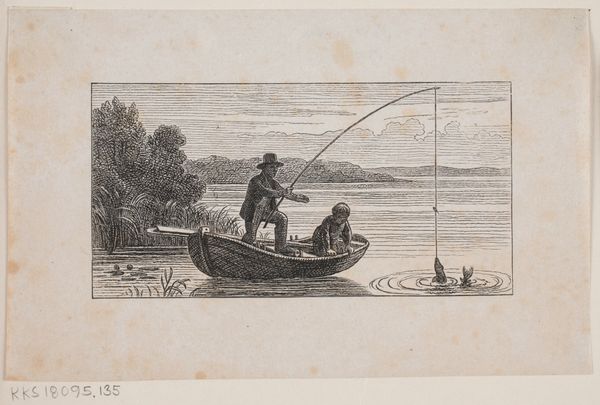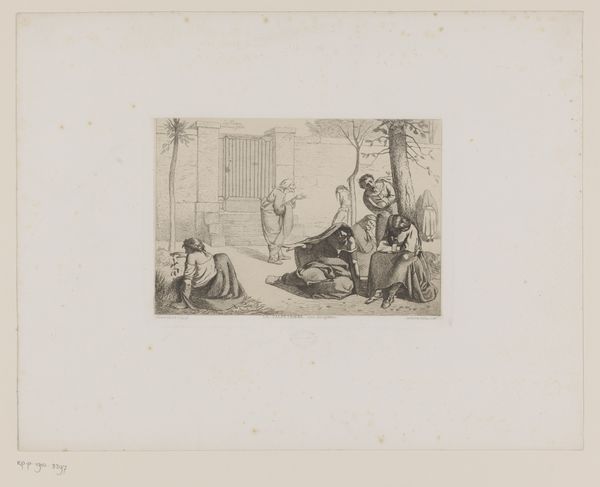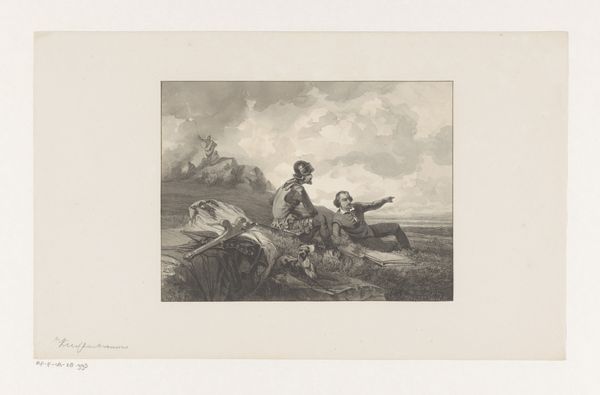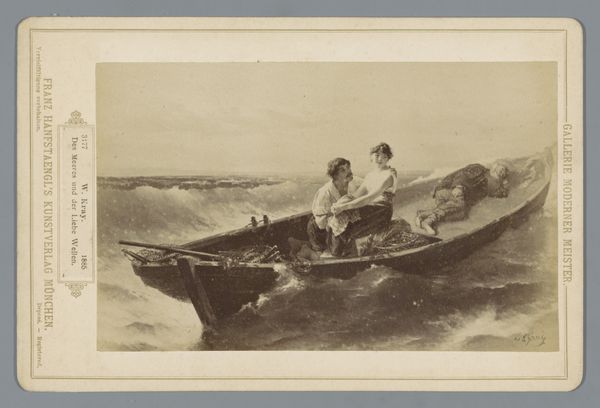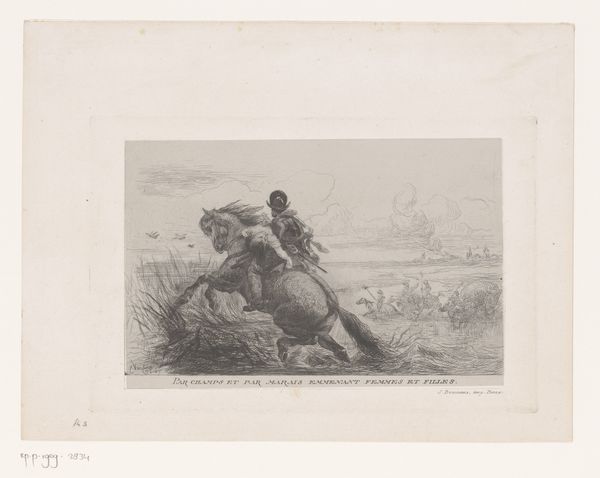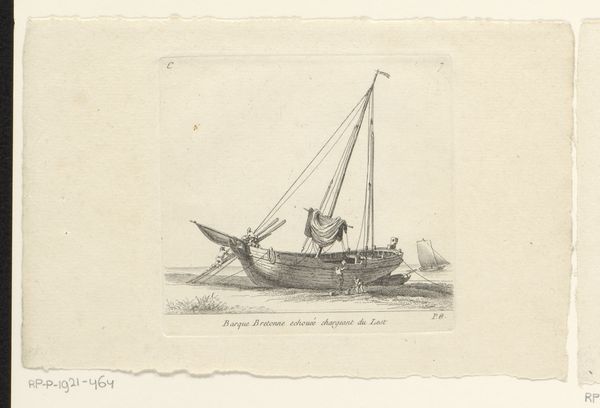
Dimensions: height 84 mm, width 51 mm
Copyright: Rijks Museum: Open Domain
Editor: So this is "Fotoreproductie van Am Strande," an anonymous gelatin silver print from the late 19th century. It looks like a tender scene of a father and child at the beach, but there's a weariness to the man that I find interesting. What do you see in this piece, from your perspective? Curator: For me, this photograph is ripe with information about the means of production and social context of image making at that time. Think about gelatin silver prints. How did they change image-making? This process, emerging around 1870, democratized photography, making it far more accessible. Instead of fragile and cumbersome glass plates, photographers could use flexible, pre-coated film. This photograph captures not just a tender moment, as you say, but also a pivotal shift in the technology and the commercialization of photographic practice. Editor: That's interesting. I hadn't considered the materials themselves as part of the story. The "everydayness" of the scene had drawn me in. Curator: And consider the backdrop! We see what seems like a fisherman's life-- a tough, labor-intensive lifestyle. This photograph isn’t just a portrait; it's a record of social realities being produced and, importantly, consumed as images became more accessible. How were these types of images disseminated to wider audiences, and who profited from it? These are crucial considerations. Editor: I suppose focusing on the family distracts from the production of this particular kind of leisure, a middle-class fantasy enabled by new technologies and the labor of people by the sea. Thank you, that gives me a lot to think about. Curator: Exactly. Analyzing the materials and the process unveils the underlying socio-economic forces at play.
Comments
No comments
Be the first to comment and join the conversation on the ultimate creative platform.
